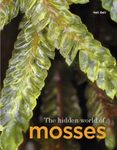![Die Sphagnum-Arten der Welt [The Sphagnum Species of the World] Die Sphagnum-Arten der Welt [The Sphagnum Species of the World]]()
Click to have a closer look
About this book
Contents
Related titles
Recommended titles
About this book
Language: German with bilingual summary in English and German
Michaelis' exquisitly illustrated german language monograph documents world wide Sphagnum-species (peat mosses) and provides a key for them. It is the first synoptic documentation since Carl Warnstorfs seminal Sphagnologia Universalis (1911). Since that time, many names were recognized as synonyms and revised, particularly by Andrews, Eddy und Isoviita. These revisions, plus approximately 150 valid newly described species and many data by the author are presented here. Genetic studies were used to distinguish problematic species.
Among the mosses, peat mosses are of particular ecological and economic importance. They are inhabiting almost all continents, particularly Northern South America, North America, Eastern and Northern Asia, and Europe. Sphagnum is an isolated species of the peat mosses, and common features of their sporophyte indicate a distant relationship to rock mosses (class Andreaeopsida). Different approaches to subdivide Sphagnum are available, which yield up to four subspecies and up to 18 distinct sections, 13 of which are distinguished by this author, among them the newly established section Lapazensis.
Peat mosses sensu strictu (Sphagnum) exhibit a combination of leaf dimorphism (stem and branch leaves) which is unique among the mosses. Although assignment of a peat moss to Sphagnum is generally unproblematic, identification of some individual Sphagnum-species may be challenging.
The author initially describes the anatomy and morphology of Sphagnum, and expands this to describe its reproductive biology, evolution and the history of peat moss research. The systematic part is subdivided in three sections: subdivision and description of the sphagnum-sections, identification key for all peat moss species and lists of sphagnum species for 19 regions worldwide. Keys for Africa, Europe and North America are based on previously available data, are completed by adding recent descriptions, new species concepts and new floristic data. The keys for South America and Asia are new, because previously there were none.
286 Sphagnum species are described exhaustively, supplemented by data on habitats, geographic distribution and synonym lists. Internal and external features are depicted on 194 plates. The volume concludes with a very exhaustive list of references.
Contents
Vorwort 3
Zusammenfassung 4
Abstract 5
1. Einleitung 6
2. Schlussel und Kurzbeschreibung der Sektionen 20
3. Schlussel und Regionalfloren 26
4. Artbeschreibungen 65
5. Verzeichnis der verwendeten Fachausdrucke 372
6. Literatur 373
7. Verzeichnis der Zeitschriften und Schriftenreihen 386
8. Abbildungsnachweis 390
9. Register 393
Customer Reviews






![Die Sphagnum-Arten der Welt [The Sphagnum Species of the World] Die Sphagnum-Arten der Welt [The Sphagnum Species of the World]](http://mediacdn.nhbs.com/jackets/jackets_resizer_xlarge/19/195030.jpg?height=620)
![Die Sphagnum-Arten der Welt [The Sphagnum Species of the World]](http://mediacdn.nhbs.com/jackets/jackets_resizer/19/195030.jpg)






![Die Sphagnum-Arten der Welt [The Sphagnum Species of the World]](http://mediacdn.nhbs.com/jackets/jackets_resizer_medium/19/195030.jpg?height=150&width=109)






















